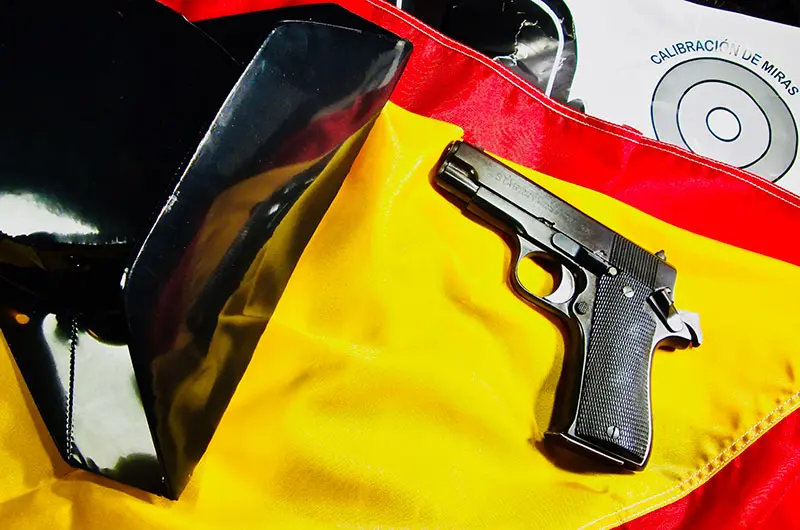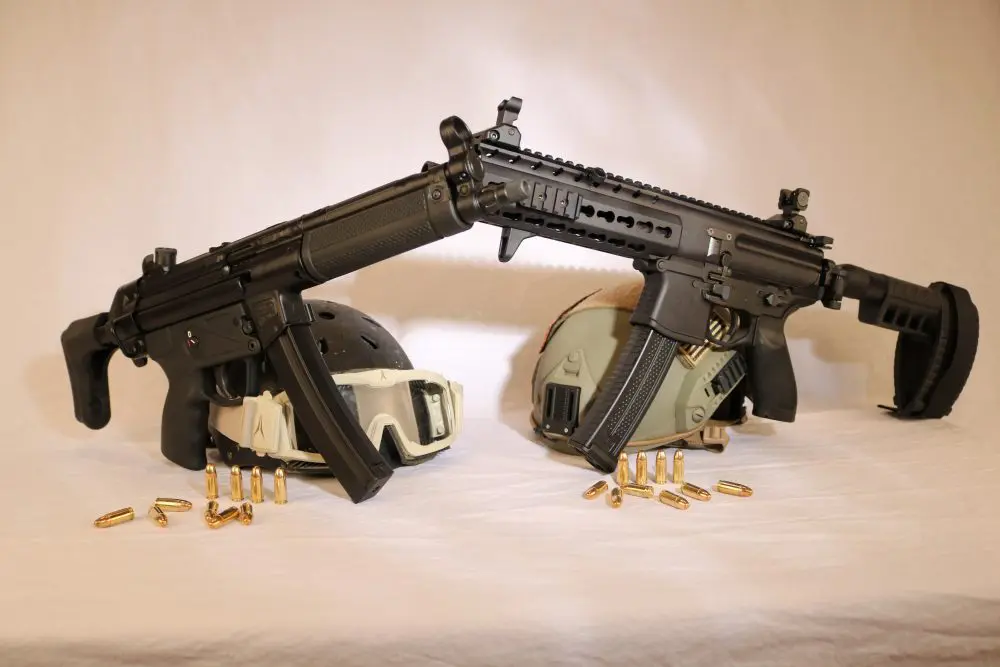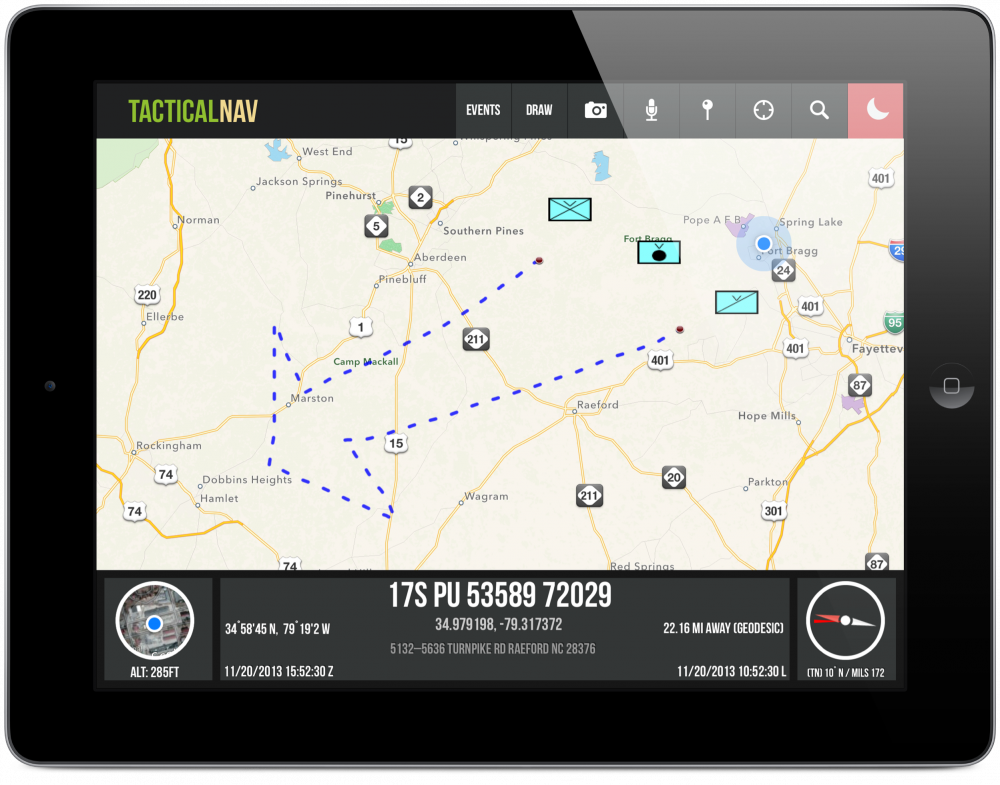
I remember buying my first trench shotgun, a Winchester Model 97. A local gun shop specializing in collectible and antique firearms had one showing some battle wear but in sound operable condition. A friend of mine who was an FBI agent and I stopped by the shop.
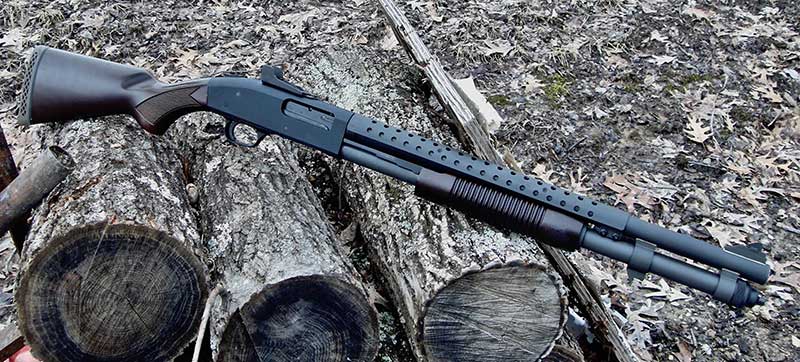
One aspect of the visit that has stayed in my mind was the massage parlor next door. My friend was a street agent working undercover—he looked as if FBI stood for “Feral Band of Indigents,” so the girls weren’t shy. Of course, he was a little shocked when a couple of scantily clad young ladies were hanging out the door yelling, “Hello, Mr. Thompson!” I explained that I’d had them in class when I taught high school.
I politely waved to the girls and entered the shop to purchase the Model 97 trench.
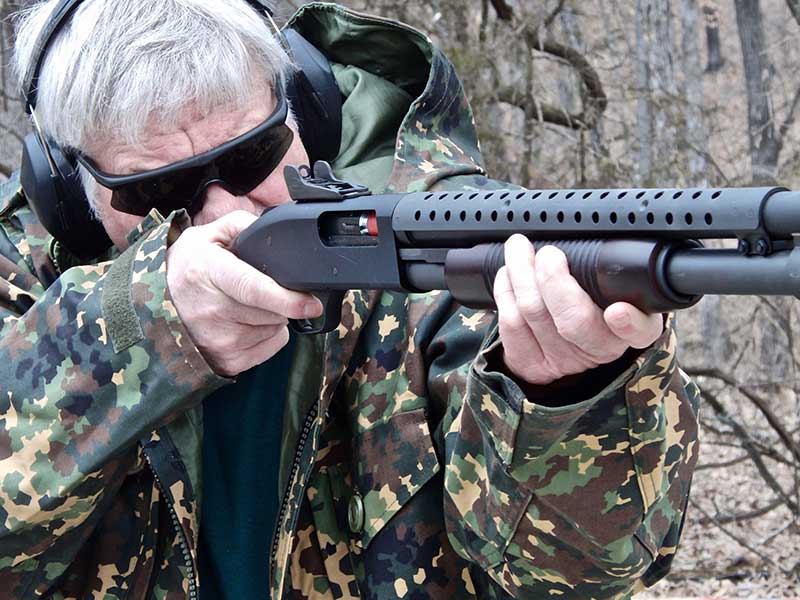
Since that day, trench shotguns have been favorites of mine, both aesthetically and practically. Mossberg shotguns are also favorites of mine. I especially like the 590A1, which withstood rigid U.S. military testing before its adoption.
The term “trench shotgun” stems from the use of the Winchester Model 97 in World War I to counter German trench raids or to give U.S. doughboys an edge when raiding German trenches. For close combat, the ability to mount a bayonet on the shotgun was deemed advantageous.
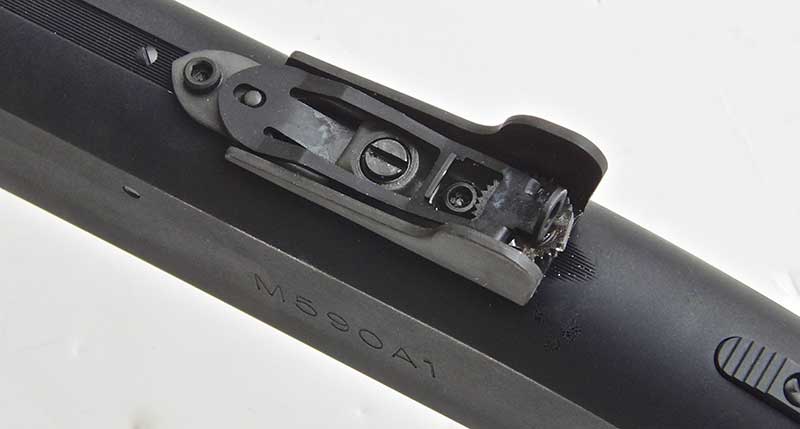
But if the shotgun had been fired a few times, the barrel would be too hot to grasp with the forward hand for bayonet thrusts. As a result, a heat shield (ventilated handguard) with bayonet lug was developed for the shotgun. Also incorporated onto this assembly was a forward sling swivel.
Although the Model 97 remains the classic trench shotgun, during World War I, the Remington Model 10 was also used, though it had a wooden handguard instead of a ventilated metal one.
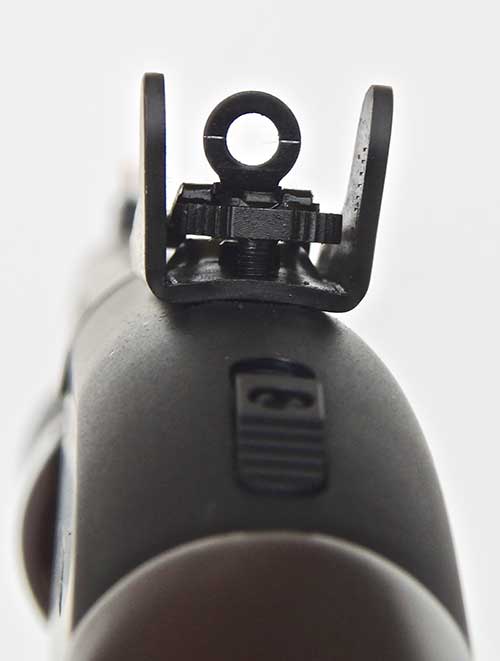
For World War II, an array of other shotguns were issued, including the Winchester Model 12, Stevens Model 520, Stevens Model 620, and Ithaca Model 37. Trench guns also saw use in Vietnam and later.

Although some self-loading riot guns were used in World War II, the trench shotgun has normally been a pump action. Historically, trench shotguns did not have an extended magazine, as the bayonet lug would have blocked the extension. During the Vietnam War, the USMC acquired some Remington 870A1 shotguns that had a bayonet lug and an extended magazine but no ventilated handguard.
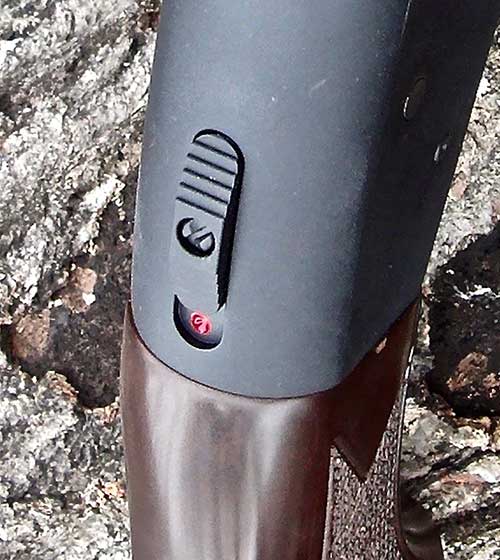
But Mossberg’s M590 was available with an extended magazine, ventilated handguard, and bayonet lug, so the USMC ordered some of this model. To upgrade the original 590 to milspec, the 590A1 incorporates a barrel with “heavy” walls, plus metal trigger guard and safety slider for more durability, and a magazine tube that allows removal of the cap for cleaning.
I’ve had a 590A1 for a few years and it’s one of my favorite combat shotguns. I believe in preparedness and consider a durable shotgun with nine-round magazine capacity and ability to mount a bayonet an excellent choice for civil unrest/counter looting.
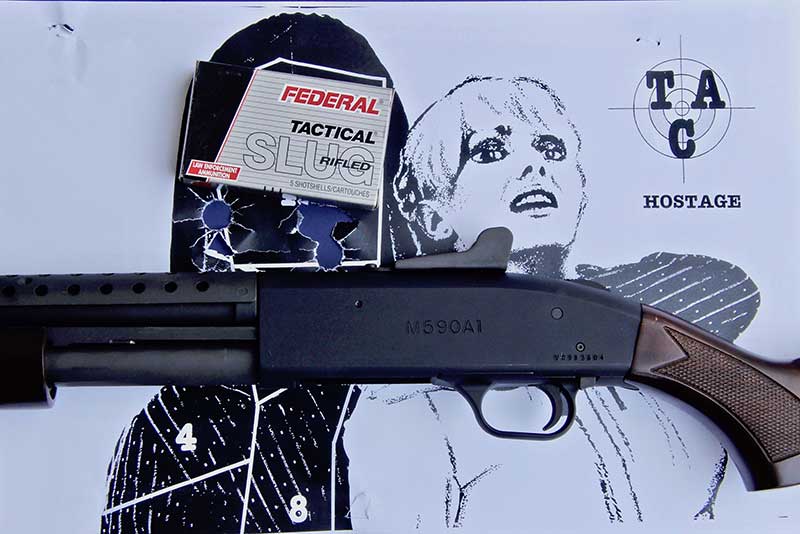
I can mount an M9 bayonet, load the magazine with 00 or #4 buckshot, depending on the circumstances, and be confident of discouraging urban predators. A basic premise in bad times is, don’t let a potential attacker get too close. A bayonet jutting outward offers a statement or allows you to make your “point” to a greater or lesser depth.
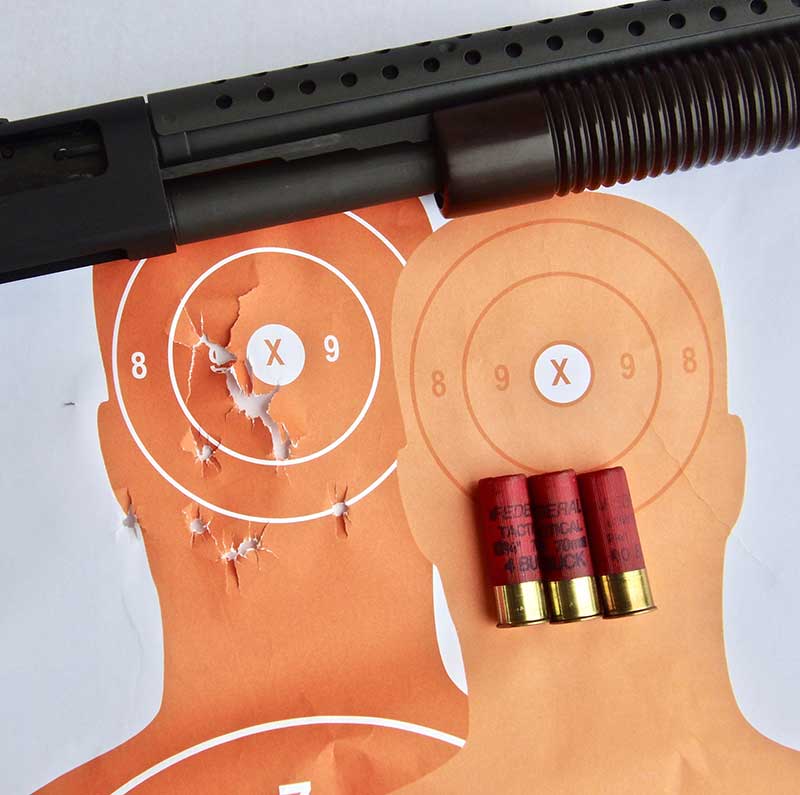
If escalation of force is necessary, buckshot works quite well. I do have a few beanbag, rubber bullet, and rubber buckshot loads available too. That’s an advantage of a pump shotgun—it also functions with less-lethal rounds.
When Mossberg introduced the Model 590A1 Retro with walnut stock and forearm, I decided I wanted one. The 590A1 I’ve been using has polymer furniture and has proven durable. It is still one of my go-to weapons. But my classic trench guns have wooden furniture, so I thought a 590A1 with wooden furniture would be nostalgic. As with the standard 590A1, the Retro is Parkerized, which contrasts nicely with the walnut furniture. Ergonomic features are the same ones I like on other 590A1s.
The safety atop the receiver allows easy operation without changing the shooting grip and when shooting off either shoulder. The bolt release button is located so I can operate it with the middle finger of my shooting hand while retaining my shooting grip. The adjustable rear ghost-ring sight and front post allow quick acquisition with buckshot and relatively precise shooting with slugs.
Tubular magazine capacity is eight, so the capacity is nine with a shell in the chamber.
The 590A1 Retro functions as well as it looks. I fired 50 rounds of various sized buckshot and slugs when testing it. As always with a pump shotgun, care must be taken to pull the forearm back sharply and push it forward sharply to ensure reliable extraction and feeding.
Even with three-inch Magnum loads, the recoil pad kept the shotgun tolerable to shoot. With 2¾-inch loads, recoil was handled easily for multiple follow-up shots. I fired patterns at ranges from ten to 35 yards. The 590A1 is standard cylinder bore, but patterns were good for a combat shotgun.
With various types of buckshot, patterns ran about three inches at ten yards. There was more variance at 20 yards, with patterns between 4.5 and 7.5 inches. At 35 yards on a silhouette target, patterns opened up to 12 to 15 inches. All were as good as or better than any of my combat shotguns that I have not had custom choked.
Although I do not recommend tactical units use a shotgun in hostage rescue situations, years ago I worked with a team that was limited to the use of shotguns and handguns—no rifles.
I had a Scattergun Technologies shotgun built and choked so that I could use it for precise placement of a buckshot pattern to 15 yards. I tested it with various buckshot loads and determined which patterned best and practiced until I could take headshots on targets with it.
Normally, if I were forced to take a head shot with a shotgun and it had usable sights, I would choose slugs. Still, as a drill to test shotguns, I sometimes use a hostage rescue target. With the 590A1, I used Federal Tactical 00 Buckshot at seven yards and Federal Tactical Slugs at 25 yards to take hostage-taker head shots. In both cases, the 590A1 Retro allowed good placement of the slugs and buckshot.
Once again, for a hostage-taker headshot, a rifle, SMG, or handgun would normally be the weapon of choice, depending on range. But I do find such shots with a shotgun good training, as they require focus on where the pattern is placed.
For accuracy, ergonomics, reliability, and value, the Mossberg 590A1 Retro gets high marks. I like the Mossberg 590A1 as a self-defense/preparedness shotgun, and the Retro adds a bit of visual appeal to the combat shotgun.
SOURCES
O.F. MOSSBERG & SONS, INC.
(203) 230-5300
www.mossberg.com
FEDERAL PREMIUM AMMUNITION
(800) 379-1732
www.federalpremium.com
SON OF A GUN TARGETS
www.sonofaguntargets.com
MOSSBERG 590A1 RETRO SPECIFICATIONS
| MANUFACTURER | O.F. Mossberg & Sons, Inc. |
| TYPE | Slide-action shotgun |
| MODEL | 590A1 Retro |
| CAPACITY | 8+1 |
| GAUGE | 12 |
| OVERALL LENGTH | 41 inches |
| BARREL LENGTH | 20-inch cylinder bore |
| WEIGHT | 7.25 pounds |
| SIGHTS | Rear ghost ring, front ramp |
| OTHER FEATURES | Ventilated handguard with bayonet lug |
| SUGGESTED RETAIL PRICE | $902.00 |


